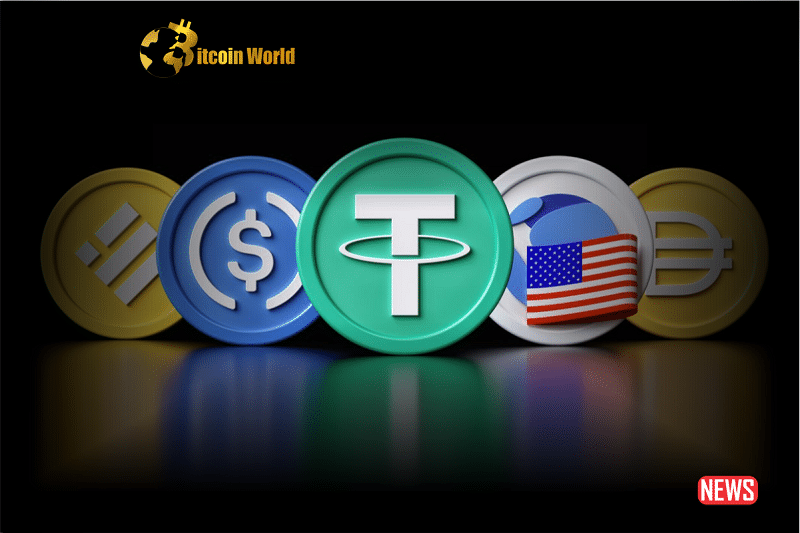In the ever-evolving landscape of cryptocurrency, stablecoins have emerged as a vital bridge between safety and innovation, particularly in regions where access to secure banking services is limited, and political unrest is prevalent. These digital currencies offer stability and are becoming increasingly relevant in the global financial ecosystem.
In 2022, stablecoin volume reached a staggering record high of $7.4 trillion, surpassing the transaction volume of major credit card companies. While stablecoin volumes have seen a slight dip this year, the persistent rise in inflation worldwide has created a growing demand for stable currencies.
It’s essential to recognize that not all stablecoins are the same, making it crucial for regulators and users to understand their differences. This understanding is particularly important in the United States, where the Biden administration’s Operation Chokepoint 2.0 seems aimed at consolidating the power of government agencies to curb the growth of cryptocurrencies.
A recent International Monetary Fund Working Paper emphasized the success of stablecoins in Latin America in preserving savings and safeguarding livelihoods, offering the benefits of crypto assets without the extreme volatility. However, stablecoins possess additional features that can drive us towards a modern era of transparent, fair, and useful money.
One such feature is programmability, which enables stablecoins to perform certain functions automatically, free from intermediaries seeking rent-seeking opportunities. Entrepreneurs, businesses, and governments can leverage decentralized blockchains to create stablecoins that provide self-healing stability, personal privacy, and true ownership autonomously.
Furthermore, stablecoins should provide on-chain, auditable proof of reserves, offering transparency regarding the types and amounts of collateral. This transparency enables users to select assets that align with their risk profiles.
Decentralized community governance is another critical aspect. In the 21st century, confidential agreements favoring a select few are incompatible with modern ideals. Public accountability acts as a force multiplier against fraud and negligence, empowering citizens to choose systems that reflect their values.
A diversified basket of assets backing stablecoins in a 1:1 ratio offers a decentralized and secure solution that mitigates risk by spreading it across various assets. This approach ensures stability and resilience, even in times of institutional or governmental failures.
Traditional banks and early stablecoin players have historically kept revenue for themselves, but newer decentralized stablecoins introduce revenue-sharing mechanisms on-chain. This regenerative paradigm of sharing fosters the creation of a new financial system that benefits users and stakeholders alike.
Despite their numerous benefits, stablecoins do come with risks and barriers to adoption that need to be addressed. One such risk is the potential for depegging, as seen with Circle’s USDC during the fallout from the Silicon Valley Bank run. Implementing a self-healing stablecoin design, diversifying and overcollateralizing assets, and enabling autonomous recapitalization during black swan events can mitigate depegging risks.
Smart-contract vulnerabilities also pose a challenge. While decentralized stablecoins leverage smart contract automation, ensuring system efficiency, transparency, and integrity, they also introduce a learning curve and potential vulnerabilities. Rigorous testing, independent audits, and white-hat hacker bug bounties are crucial to minimize smart-contract risks.
Regulatory challenges persist as well. While elected representatives and regulators prioritize consumer protection, transparency, and accountability in the crypto industry, regulatory frameworks are slow to materialize. However, these initiatives should be viewed as opportunities that, when effectively implemented, can unlock wider adoption and access to traditional finance capital markets.
The future of stablecoins holds immense potential. Their evolution towards decentralized, asset-backed stable money can enhance payment and financial services, expand access to billions of underserved individuals, and revolutionize our financial system with fairness and transparency. As global inflation rates rise, the need for stable currency becomes increasingly apparent, particularly in underserved regions.
As we enter the next decade, the emergence of various stablecoins signifies an era of unbundling and reinvention. The incentive to rely on a one-size-fits-all currency diminishes as the creation and transition between currencies become seamless and cost-effective. Programmability introduces new benefits, and stablecoins promise a more accessible financial system for billions, fostering new networks and community livelihoods.
Stablecoins act as a catalyst for crypto adoption, offering the developing world an avenue to tap into financial opportunities previously exclusive to the West. They represent a ripple effect, igniting a larger transformation within the financial system. By transitioning from fractional to whole 1:1 asset-backed systems, we can make banking safe for everyone.














